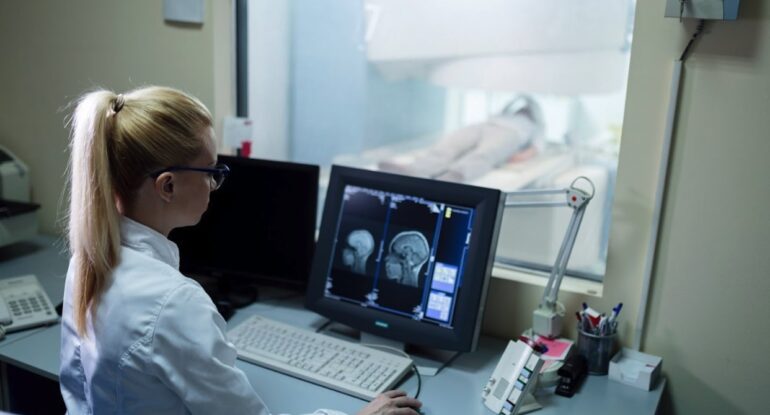
Do I Need an MRI or CT Scan for My Migraine? Here’s What You Should Know
Migraines are a common form of headache where patients often report a pounding or throbbing sensation on one or both sides of the head. This is frequently accompanied by symptoms such as nausea, vomiting, and sensitivity to light or sound. In more severe cases, the pain can become so intense that patients may seek help at an urgent care centre or emergency department. If this sounds familiar, you might be wondering: Do I need a brain scan?
MRI (Magnetic Resonance Imaging) brain scans and CT (Computed Tomography) scans are two different techniques that doctors use to visualise the brain. In an MRI brain scan, strong magnetic fields are used to create detailed, three-dimensional images of the brain’s structure. In contrast, a CT scan combines multiple X-rays to produce a 3D image, though usually of lower quality compared to an MRI. Despite their capabilities, most patients with migraine do not require imaging, as migraines are not typically linked to structural abnormalities in the brain.
When Imaging Is Not Required?
According to the guidelines from the American Headache Society and the Agency for Care Effectiveness, most people with migraines do not require imaging if:
- Your migraines follow a consistent pattern
- Your headache pattern has remained unchanged for months or years
- Your doctor does not observe any abnormalities during a neurological exam
- There are no alarming symptoms that suggest a sinister cause
When Imaging Is Required?
Your doctor may recommend an MRI or CT scan for your migraine if any of the following red flags are present:
- A change in the character or intensity of your headache
- A new headache after age 50
- Abnormal findings in your neurological examination
- Sudden and severe onset of headache
- A recent head injury or trauma
- A personal history of cancer
- Signs that may suggest a brain infection
MRI or CT Scan: Which Is Better?
So, which is better: MRI or CT scan for brain imaging?
Generally, an MRI provides significantly more detailed information about brain architecture, making it the preferred choice for most headache-related assessments. Unlike CT scans, MRI brain scans do not expose patients to radiation, which is another advantage.
However, MRI scans have their downsides. They typically cost more, take longer to perform, and may be difficult for those with claustrophobia due to the enclosed space. There may also be longer wait times. If you’re concerned about affordability, it’s worth noting that MRI brain scan cost in Singapore varies depending on the clinic or hospital, but subsidies or insurance may help offset the expense.
When To Seek Medical Advice
If you are concerned about your headaches, do not brush them off. Speak to your doctor or visit a pain clinic for proper evaluation. While most migraines aren’t dangerous, it’s still important to seek medical advice and determine if imaging is required for your case.




